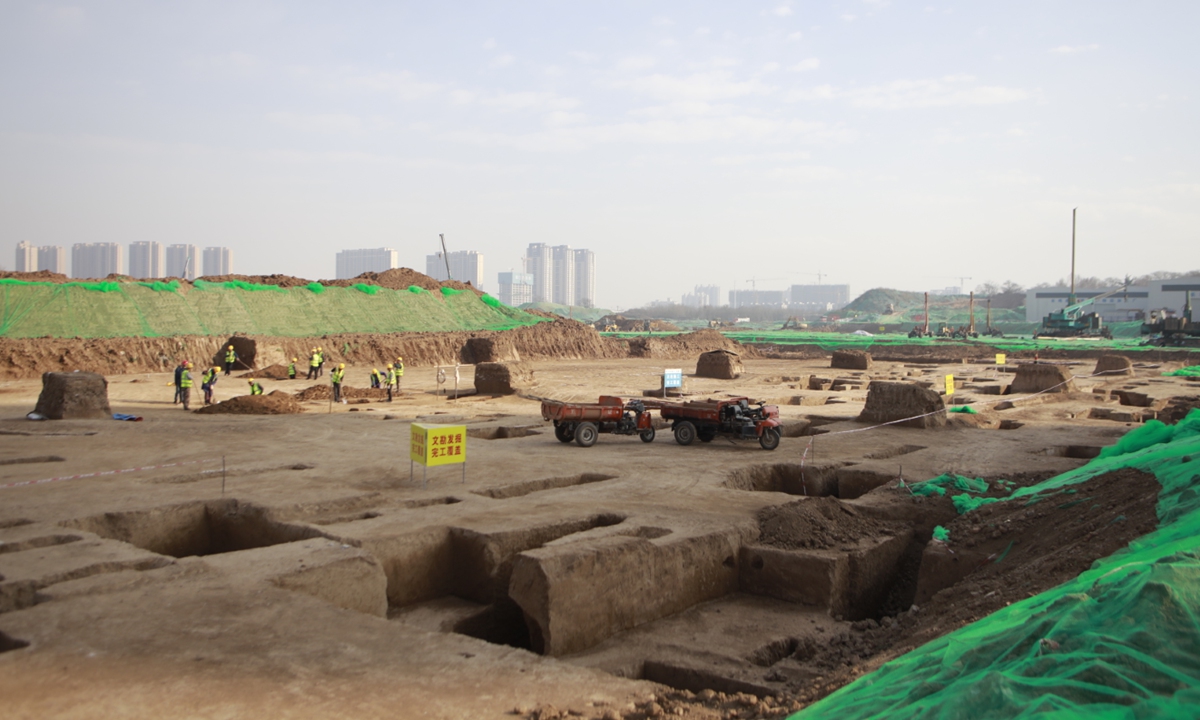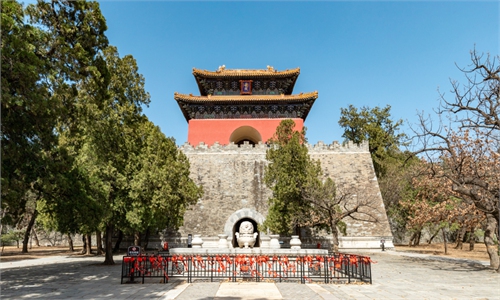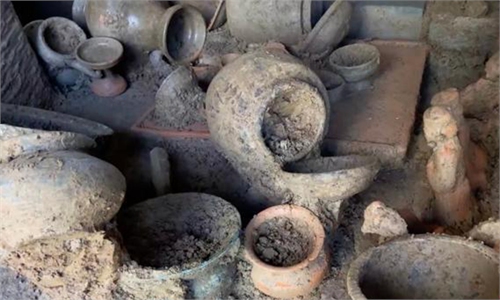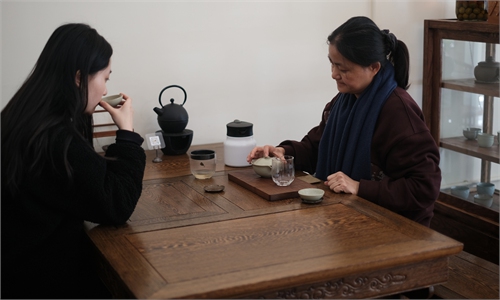ARTS / CULTURE & LEISURE
Over 3,000 tombs unearthed in Xi’an, spanning 2,000 years

Photo: VCG
Archaeologists have uncovered over 3,000 tombs, some dating back more than 2,000 years, along with rare artifacts, in an excavation at Caojiabao village in Xi'an, Northwest China's Shaanxi Province.
The news was announced at an academic symposium held in Xi'an recently. The excavation, carried out by the Xi'an Institute of Cultural Relics Protection and Archaeology between 2023 and 2024, unearthed tombs spanning from the Spring and Autumn Period (770BC-476BC) to the Qing Dynasty (1644-1911) as of October.
"This discovery reflects that the Guanzhong region (central Shaanxi), with Xi'an as its center, is one of the areas where traditional Chinese culture is most concentrated. It particularly embodies the characteristic of the continuity of Chinese civilization, which has persisted uninterrupted till today," Liu Zheng, a member of the China Cultural Relics Academy, told the Global Times on Sunday.
Among the discoveries, over 2,300 tombs from the Warring States Period (475BC-221BC) to Qin Dynasty (221BC-206BC) were uncovered, featuring various types of burial structures. This discovery pushes the timeline of the Qin culture in the southern suburbs of Xi'an back to the mid-Spring and Autumn Period, creating a complete chronological sequence of the Qin culture.
There are also some notable discoveries. For example, a Warring States Period tomb yielded a rare openwork coiled dragon-patterned bronze mirror, the first of its kind found in Xi'an. The liquid discovered in another Warring States Period tomb was found, through laboratory testing, to possibly contain alcohol, pushing evidence of wine production in Xi'an back to this period.
In a Han Dynasty (206BC-AD220) tomb, archaeologists also excavated a complete wooden comb, one of the most intact organic artifacts found in recent years in Xi'an, alongside grain remnants found from another Han Dynasty tomb that offer new material for studying agricultural practices during the Han Dynasty in the region.
A Tang Dynasty (618-907) tomb yielded a copper box containing a scroll and a copper statue, with the scroll being the most complete paper document found in a Chinese burial in recent years. The text is believed to be the sutra of Marici, a deity associated with Esoteric Buddhism, while the statue is believed to represent Marici. This discovery offers significant evidence of the spread of Esoteric Buddhism in Xi'an in the Tang Dynasty, providing crucial insights into the history of Chinese Buddhism and the dissemination of Buddhist scriptures.
The excavation also revealed more than 30 horse and chariot pits, featuring a variety of designs, a rare find in the Xi'an area. These pits shed new light on the study of the Qin-era burial customs involving horses and chariots. At one of the chariot pits, remains of seven sets of carriages, wheels, and yokes were found, with three sets already excavated, along with 10 horse skeletons.
Some carriages had traces of red lacquer and patterns, with black decorations over the red lacquer. Bronze fittings for the horses and chariots were also unearthed from the heads, axles, and bodies of the carriages.
"This archaeological achievement provides the most vivid and reliable information about the local culture of the Caojiabao area in Xi'an, laying a historical foundation for the future development of culture and related industries in the region," Liu noted.



